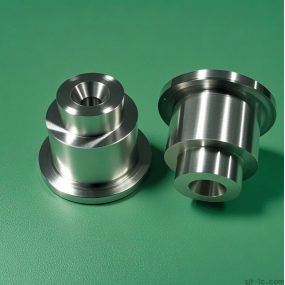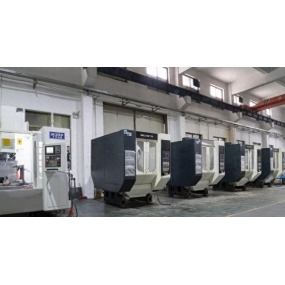Machining accuracy of parts
The deviation between the actual geometric parameters of the part and the ideal geometric parameters is called machining error. The magnitude of machining error reflects the level of machining accuracy. The larger the error, the lower the machining accuracy, and the smaller the error, the higher the machining accuracy.
We deal with processing every day and often mention precision, but are you right about precision? Or is it rigorous? Let‘s take a look at precision with Shenzhen Yuhe Diamond Tools!
Processing accuracy refers to the degree to which the actual size, shape, and position of the machined part surface conform to the ideal geometric parameters required by the drawing! The ideal geometric parameters, in terms of size, are the average size; For shapes, they are absolute circles, cylinders, planes, cones, and straight lines, etc; For mutual positions, it means absolute parallelism, perpendicularity, coaxiality, symmetry, etc.
1. Dimensional accuracy
The degree of conformity between the actual dimensions of the processed parts and the center of the tolerance zone of the part dimensions.
2. Shape accuracy
The degree of conformity between the actual geometric shape of the machined part surface and the ideal geometric shape.
3. Position accuracy
The actual positional accuracy difference between the surfaces of the processed parts.
4. Mutual relationship
Usually, when designing machine parts and specifying the machining accuracy of parts, attention should be paid to controlling the shape error within the positional tolerance, and the positional error should be less than the dimensional tolerance. The shape accuracy requirements of precision parts or important surfaces of parts should be higher than the positional accuracy requirements, and the positional accuracy requirements should be higher than the dimensional accuracy requirements.
The deviation between the actual geometric parameters of the part and the ideal geometric parameters is called machining error. The magnitude of machining error reflects the level of machining accuracy. The larger the error, the lower the machining accuracy, and the smaller the error, the higher the machining accuracy.
Processing accuracy is mainly used for the degree of product production, and both processing accuracy and processing error are terms used to evaluate the geometric parameters of the processed surface. The machining accuracy is measured by tolerance grade, and the smaller the grade value, the higher the accuracy; The processing error is expressed numerically, and the larger the value, the greater the error. High machining accuracy means small machining errors, and vice versa.
There are a total of 20 tolerance levels from IT01, IT0, IT1, IT2, IT3 to IT18. Among them, IT01 represents the highest machining accuracy of the part, IT18 represents the lowest machining accuracy of the part, and generally IT7 and IT8 are of medium machining accuracy.
The actual parameters obtained by any processing method will not be absolutely accurate. From the perspective of the function of the part, as long as the processing error is within the tolerance range required by the part drawing, it is considered to ensure the processing accuracy.
The difference between accuracy and precision: 1. Accuracy
The degree of closeness between the obtained measurement results and the true values. High measurement accuracy refers to a small systematic error, where the average value of the measurement data deviates less from the true value, but the data is scattered, that is, the size of the accidental error is not clear.
2. Precision
Refers to the reproducibility and consistency between the results obtained from repeated measurements using the same backup sample. It is possible to have high precision, but the accuracy is not precise. For example, the three results obtained by measuring with a length of 1mm are 1.051mm, 1.053, and 1.052, respectively. Although they have high precision, they are not accurate.
Accuracy represents the correctness of measurement results, precision represents the repeatability and reproducibility of measurement results, and precision is a prerequisite for accuracy.


 Spanish
Spanish Arabic
Arabic French
French Portuguese
Portuguese Belarusian
Belarusian Japanese
Japanese Russian
Russian Malay
Malay Icelandic
Icelandic Bulgarian
Bulgarian Azerbaijani
Azerbaijani Estonian
Estonian Irish
Irish Polish
Polish Persian
Persian Boolean
Boolean Danish
Danish German
German Filipino
Filipino Finnish
Finnish Korean
Korean Dutch
Dutch Galician
Galician Catalan
Catalan Czech
Czech Croatian
Croatian Latin
Latin Latvian
Latvian Romanian
Romanian Maltese
Maltese Macedonian
Macedonian Norwegian
Norwegian Swedish
Swedish Serbian
Serbian Slovak
Slovak Slovenian
Slovenian Swahili
Swahili Thai
Thai Turkish
Turkish Welsh
Welsh Urdu
Urdu Ukrainian
Ukrainian Greek
Greek Hungarian
Hungarian Italian
Italian Yiddish
Yiddish Indonesian
Indonesian Vietnamese
Vietnamese Haitian Creole
Haitian Creole Spanish Basque
Spanish Basque











